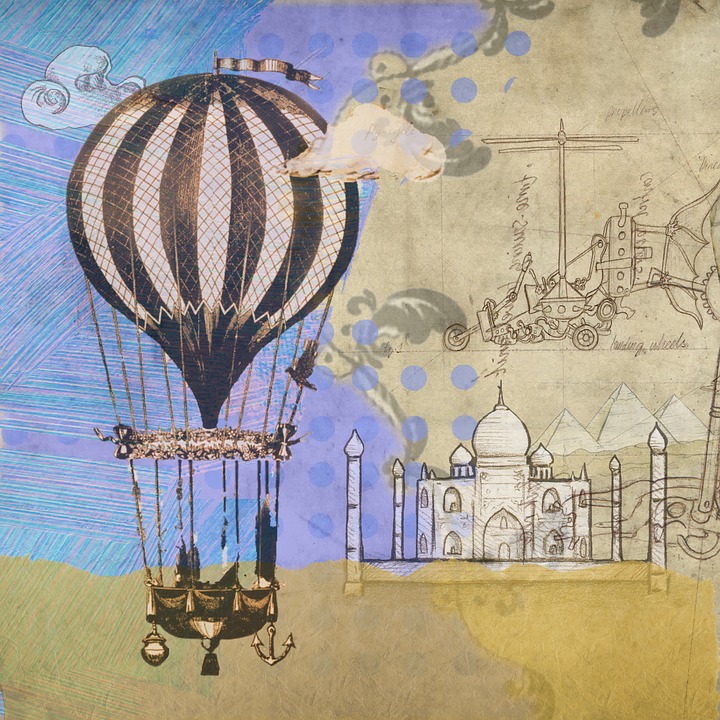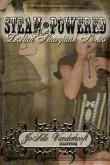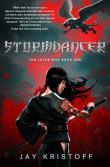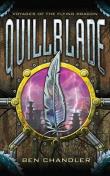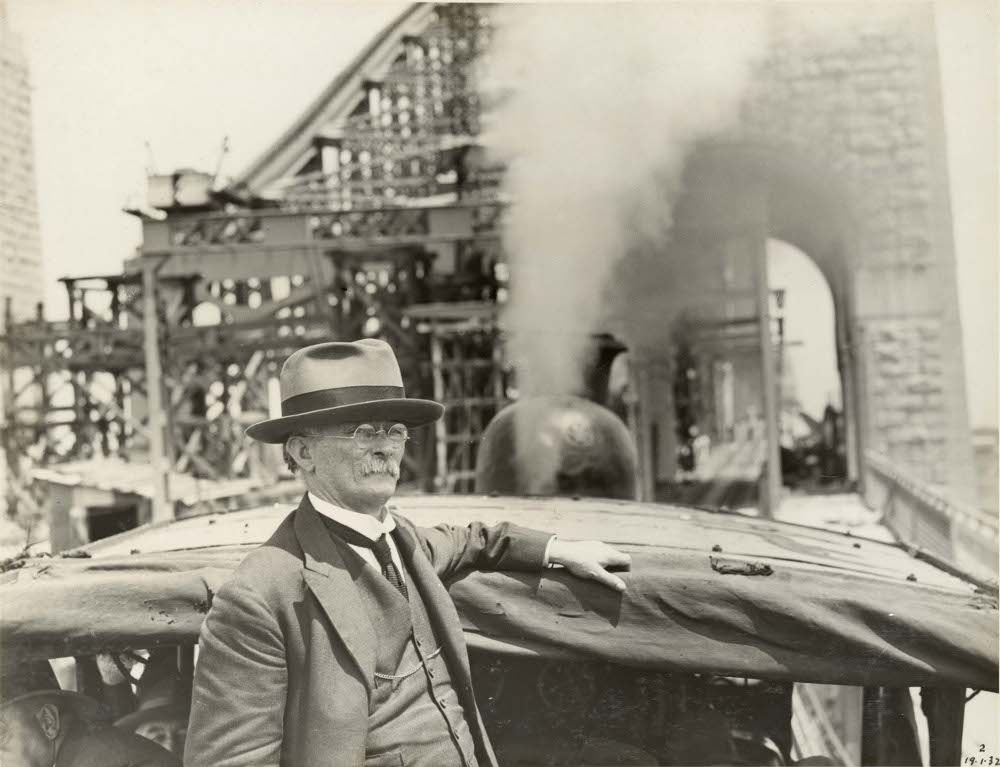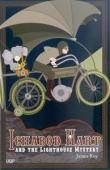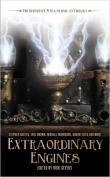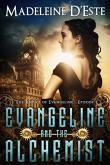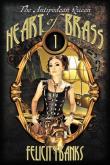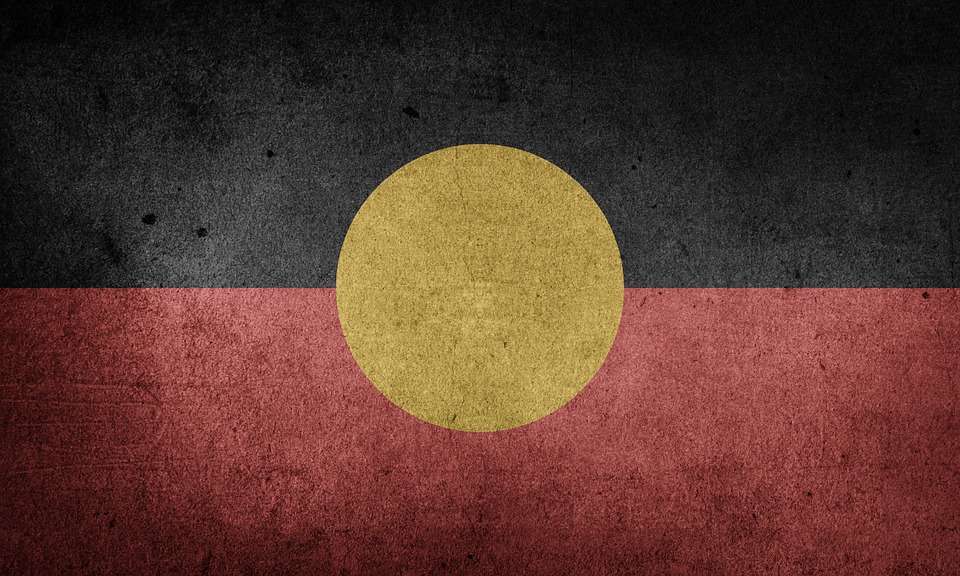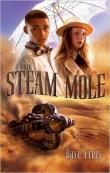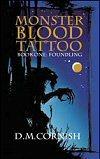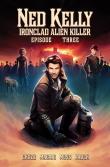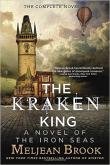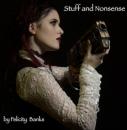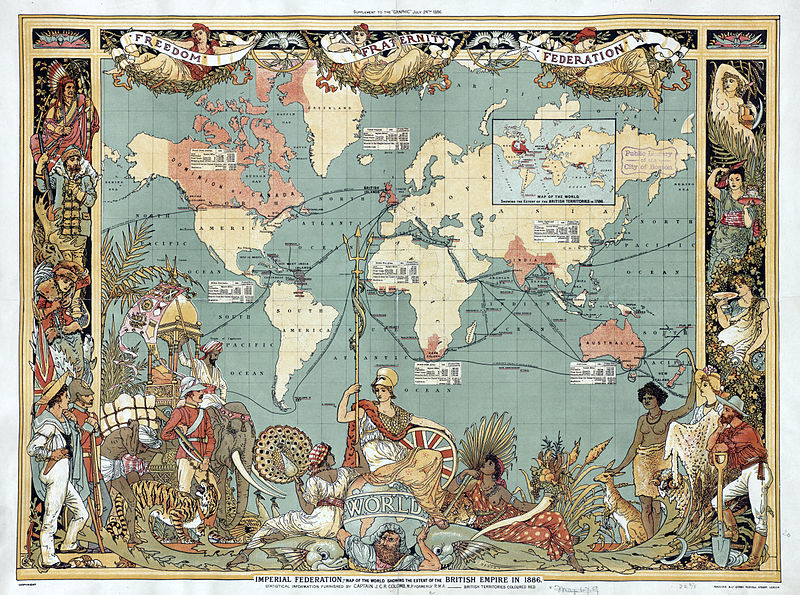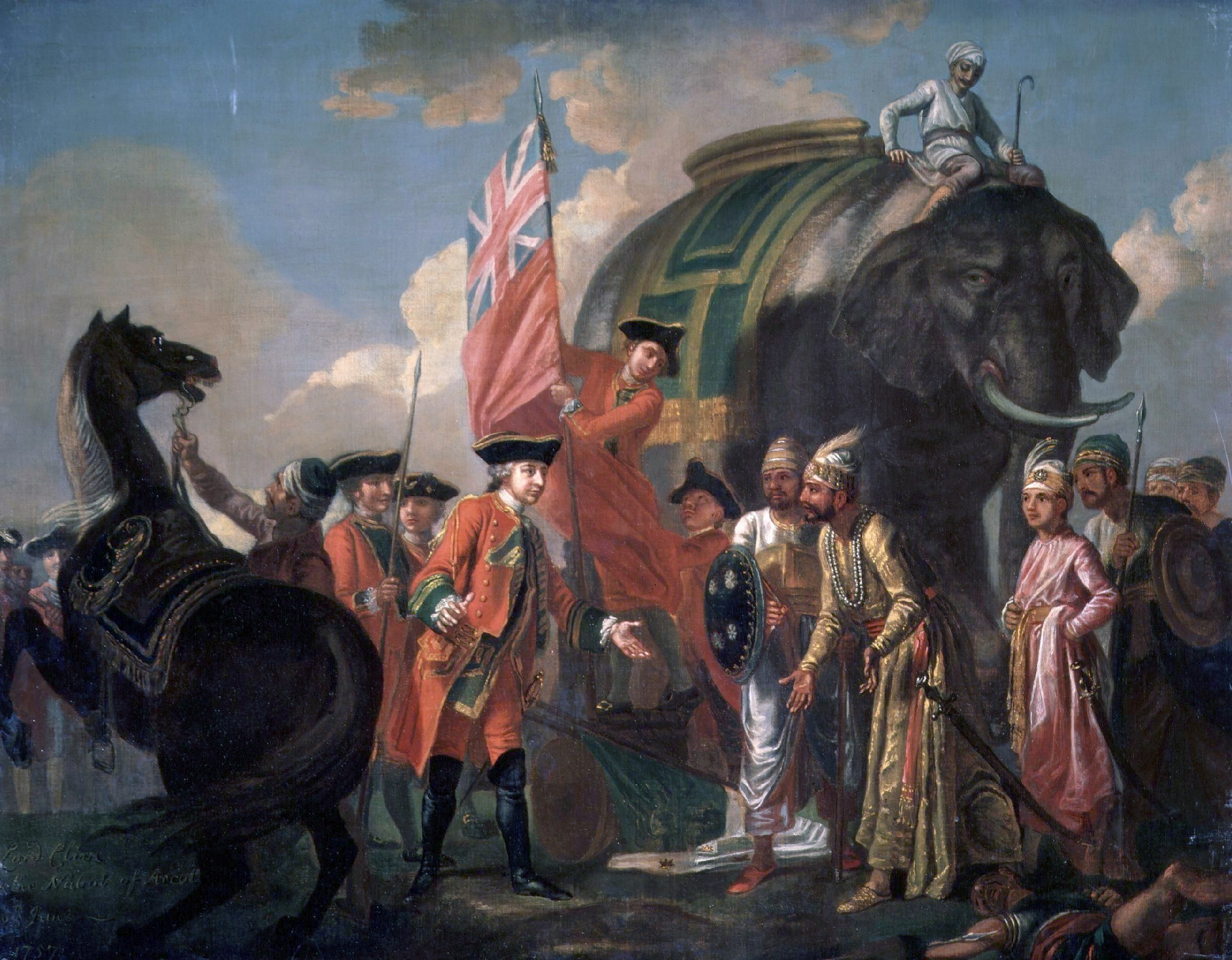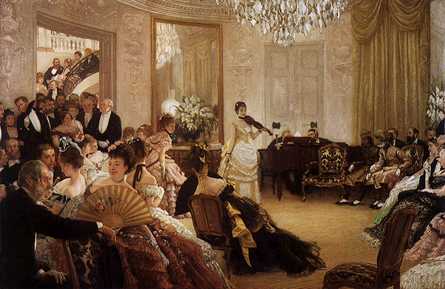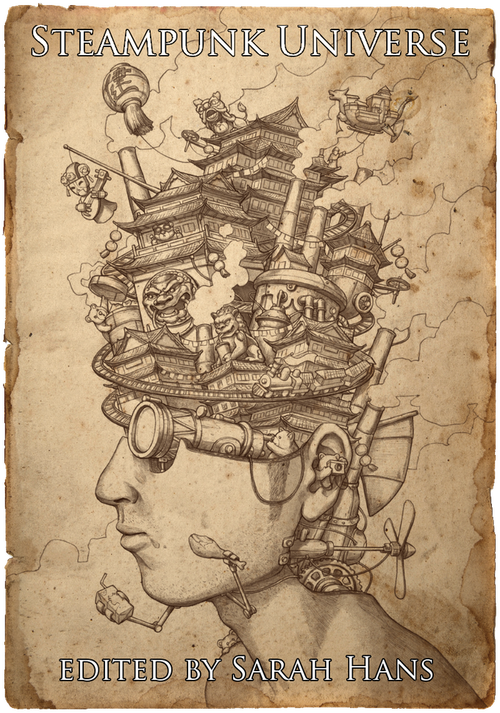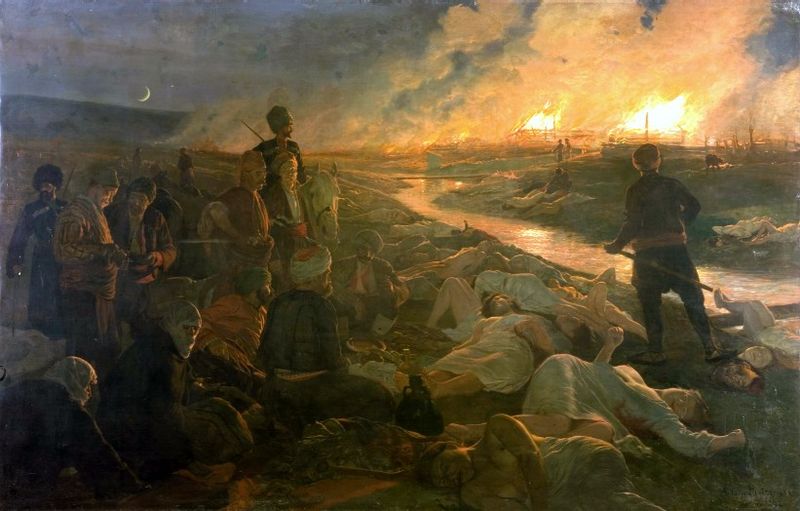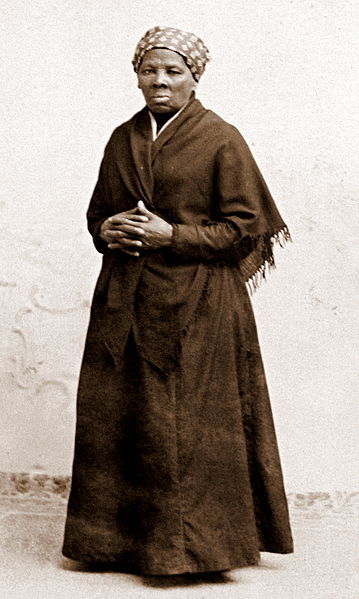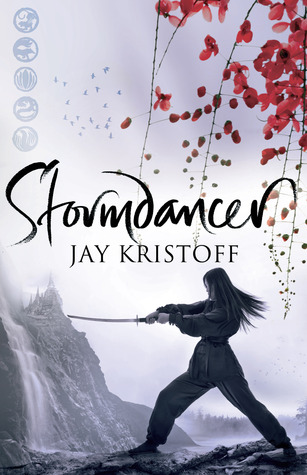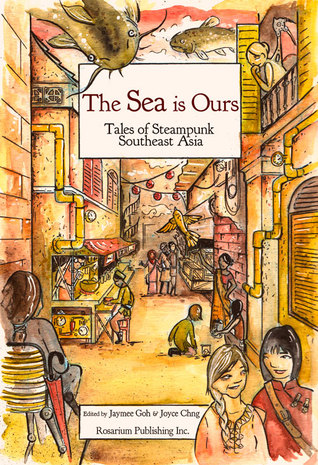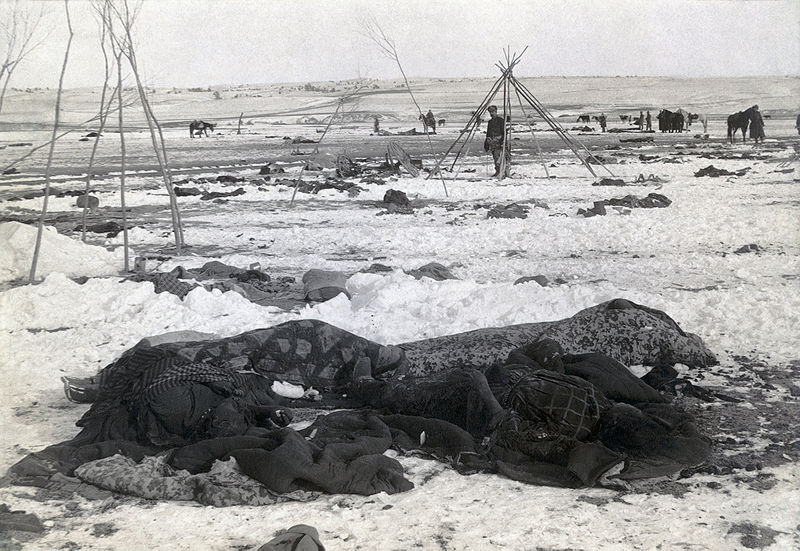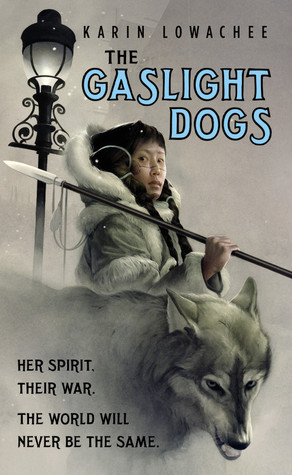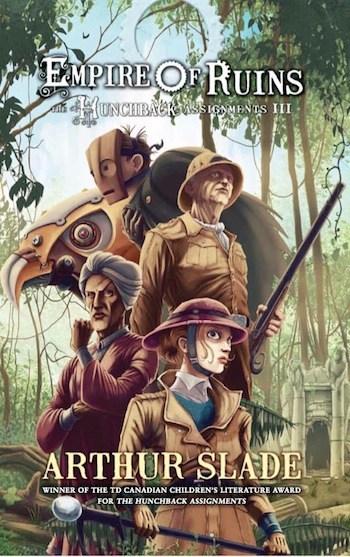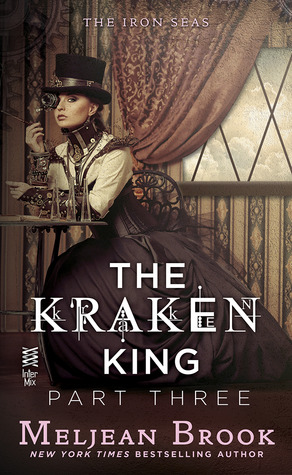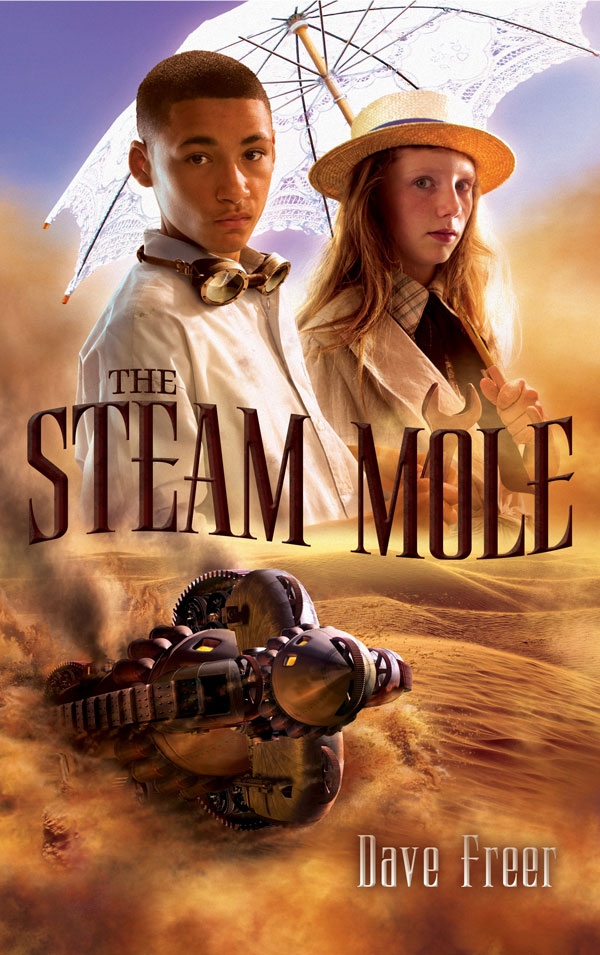AustLit
-
-
-
In her book Neo-Victorianism and the Memory of Empire, Elizabeth Ho argues that the Victorian era, as aesthetic, history, and culture, 'has become a powerful shorthand for empire in the contemporary global imagination' (5).
The presence of the Victorian-era British Empire – its fleets, its dress, its art and its laws – remains a significant feature of contemporary culture, imprinted as a set of persistent images and ideas that come less from history than from the memory of history, accurate or otherwise.
Nowhere is this more evident than in steampunk, where the aesthetics, history, technology, and culture of the Victorian era is placed at centre-stage, to be venerated, critiqued, combated, or relived. It is difficult, perhaps, to separate this cultural and historical focus from its accompanying subject of empire. Indeed, Kristin Stimpson argues that:
'The connection between steampunk and empire is an explicit part of the steampunk aesthetic. Some suggest that the symbolic references to empire help combat and critique a dark past, while others contend that it reproduces and even celebrates a history of conquest and colonialism' (22).
-
The romance of technological innovation, global exploration, or cultural refinement is tightly bound to the Victorian era’s legacy of aggressive colonial expansion, the violence and hegemony of empire.
As with many aspects of steampunk, the critical angle of practitioners and texts varies greatly, from a strong disavowal of Victoriana’s imperialism to an enthusiastic adoption and recuperation of the era with little to no awareness of its imperial component. These issues are often hotly debated within the community. In her introduction to The Mammoth Book of Steampunk, for example, US-based Russian author Ekaterina Sedia talks about steampunk
'[c]hallenging the centrality of Western civilization or the common perception of men as movers of history as woman stand quietly by the side, the invisibility of genders other than binary, sexualities other than hetero'.
Sedia's introduction was to an anthology that explicitly positioned itself, according to the publisher's back-cover blurb, as 'steampunk with a modern, post-colonial sensibility': among the authors represented were French-Vietnamese author Aliette de Bodard, African American author N.K. Jemisin, Indian-born and Scottish-based author Shweta Narayan, Israeli author Lavie Tidhar, and even two Australian representatives, Margo Lanagan and Peter M. Ball. As such, the introduction and the contents might be read as more aspirational than descriptive.
Yet Sedia is by no means alone in the sentiment: Stimpson quotes from authors (Sedia herself and Scott Westerfeld), editors (Jeff VanderMeer), and academics (Jeanette Atkinson, Cynthia Miller, and Julie Anne Taddeo, among others) who all emphasise that steampunk aims to 'expand the role of the colonized and otherwise subjugated in that era' (Westerfeld), that it 'recognizes within that epoch issues similar to those facing society in the twenty-first century' (VanderMeer), that 'Steampunks are not interested in acting out the Victorian age, with its colonial aspirations and lack of equality, but in recreating aspects of it and reinventing or reimagining others' (Atkinson), or that steampunk is 'another lens through which to examine the racial, class, and gender politics of both the past and present' (Miller and Taddeo) (all cited in Stimpson, 23).
-
But the passionate arguments for steampunk as a site for contesting the empire are by no means universally accepted. Conservatism is inherent in the Victorian impulse, and steampunk's 'engine of empire' balances precariously on a point between progressive or reactionary politics. As Stimpson phrases it,
'With steampunk, a style of the empowered classes is juxtaposed with the appropriation and exoticization of Others, and not without consequence' (27).
The blossoming of steampunk creates space for various groups and individuals seeking to expand steampunk’s often western-centric standpoint to those who exist at the fringes and antipodes of the imperial system. Australia is rarely central to these debates: post-colonial steampunk is a diffuse space, but concentrates more on South-east Asia, India, and Africa.
-
Among the prominent works addressing Eurocentricism in steampunk are the websites Silver Goggles (founded in 2009 by Canadian-based Jaymee Goh) and Beyond Victoriana (founded in 2009 by American-based Diana Pho). Silver Goggles carries the tagline 'Worn by the steampunk postcolonialist when engaging with issues of race, representation, diversity, and other such exciting adventures as one might find in our genial genre', and Goh foregrounds her concerns about the Eurocentricism of steampunk as one of the reasons why she began the site before becoming involved in the steampunk community:
'It is to push forward our remarkable, amazing, beautiful differences. It is to push back against the stultifying, dehumanizing colorblind ideology and lies of meritocracy that holds us back. It is here to demand spotlights on the histories that have contributed to the overarching Western hegemony that steampunk remains within. It is here to call out those who would speak of us, and claim to speak for us, but without us.' ('About Silver Goggles')
The site (which was last updated in mid-2016) exposed global non-Western steampunk practices, linking to Brazilian steampunk communities (Conselho Steampunk), the writing of Laotian American author Bryan Thao Worra, and the website of American steamfunk author Balogun Ojetade. Similarly, Beyond Victoriana explicitly positions itself as
'a blog about multicultural steampunk and retro-futurism—that is, steampunk outside of a Western-dominant, Eurocentric framework',
including
'the cultural intersection between the West and the non-West.'
-
Pho's site also engages with 'steampunk' in its most intersectional forms, from Iranian photographer Shadi Ghadirian's Qajar series (which juxtaposes nineteenth-century photography styles and fashions with twentieth-century domestic objects, as though the subjects are time travellers), to Harry Markov's plans for Bulgarian steampunk as a niche genre (as he notes, 'Queen Victoria’s rule coincides with Bulgaria’s most turbulent historical period'), to a series of pieces on the role of Native American culture in steampunk. Pho is concerned not only with the relative absence of non-Western steampunk but also with the apolitical nature of much modern steampunk: as she phrases it in an article in Overland,
'while most steampunks generally support a revival of nineteenth-century aesthetics as a response to modern alienation, many don’t like to acknowledge that their attitudes could be considered ideological'.
Both Silver Goggles and Beyond Victoriana arose as second-wave steampunk was expanding exponentially: that both persist well into the next decade speaks to the persistence of Eurocentric steampunk as the most visible expression of the genre.
When critical engagements and communities build up around the idea of increasing diversity in steampunk, works follow.
-
We mentioned American author Balogun's steamfunk above: his protagonist, Harriet Tubman, was in real life a former slave who escaped in her mid-twenties, and worked as an abolitionist (including physical excursions back into slave states), suffragette, and (during the Civil War), a spy. Balogun's Harriet Tubman (in The Chronicles of Harriet Tubman (Moses, 2012, and Freedonia, 2015)) is all this – but in a steampunk world that also allows her to move beyond the confines of history.
American author Maurice Broaddus (best known for his revisioning of Arthurian legend among rival Indianapolis street gangs) published 'Pimp My Airship' in 2009: Broaddus described it simply as a 'Steampunk story with all black characters', rightly implying that this alone is an uncommon steampunk narrative. The story itself is a mixture of steampunk aesthetic and revolutionary rhetoric, as characters strike back against a government's drug-based pacification program.
Malaysian author Zen Cho (best known for Regency fantasy Sorcerer to the Crown) published 'The Terracotta Bride', which offers a distinctly Asian approach to automata in Yonghua, a woman made from terracotta: 'She was not human. She had never been alive.' More recently, Nisi Shawl published Everfair (2016), a novel set in a steampunk kingdom carved from King Leopold II's Belgian Congo, perhaps the most visible example of the brutal last wave of nineteenth-century European empire-building. Everfair's cover makes explicit the ways in which a steampunk alt.history redresses colonial brutality: two hands, one flesh (and black), the other metal, a replacement for a hand removed when the rubber quota could not be met (see King Leopold's Ghost).
-
Among Australian steampunk writers, works set outside Europe or near-European secondary worlds are still comparatively uncommon. More works are being set in Australia itself, but, as we discuss in more detail below, it is almost always a post-colonial, Europeanised Australia (or, in the case of Sean McMullen and Mark Lingane, a far-future post-apocalyptic Australia). We have not yet located any Australian-written steampunk works set in Africa. Perhaps unsurprisingly, given our geographical closeness to South-east Asia, more Australian authors write works of Asian steampunk, but 'more' in this case is still 'few'.
-
The most prominent example is Jay Kristoff's Lotus War trilogy, but his Shima Imperium, while inspired by Japan, is a secondary world rather than an alt.history Japan. Scott Westerfeld's Leviathan Trilogy includes Turkey and Japan among its settings. Stephen Dedman set his short story 'The Fall' (which is more a story about steampunk than it is a steampunk story) in Tokyo. Darrell Pitt's steampunk hero Jack Mason visits Japan in the fifth book of the series. Ashley Capes uses the Japanese folktale 'The Yellow Butterfly' as the basis of his steampunk story of the same name.
However, while these works are set in Asian countries, they do not necessarily engage with a specifically Asian steampunk.
Among Australian authors, the best example of an author engaging explicitly with the idea of how steampunk might work in an Asian culture is Stephanie Lai, whose two short stories, 'The Last Rickshaw' (2010) and 'One Last Interruption Before We Begin' (2011) are both set in Penang, on the Peninsular Malaysia. 'The Last Rickshaw' explores the disappearance of a cultural practice under the pressure of new technologies. 'One Last Interruption' is alt.history colonial steampunk, in which Shu Ping is drawn to a life of adventure, but unsure about both it and herself, not least because she feels the need to hide her sexuality.
-
Both stories, as Lai notes in an interview with Silver Goggles, 'do steampunk' in 'The South-East Asian way. Lots of water, lots of makan, Chinese airships coming down the straits and exploring opportunities on the peninsula. I want to use steampunk to interrogate our colonial past at the same time as creating beautiful visuals'.
Works such as Lai's indicate the potential for Australian steampunk to explore further, but their relative scarcity also indicates that more needs to happen.
Perhaps of specific interest to Australian steampunk is the subset of post-colonial steampunk called Native steampunk (sometimes called 'Nativepunk'): the incorporation of Native American and First Nations history and culture into steampunk worlds. As with other postcolonial decodings, Native steampunk simultaneously promises and threatens. The potential to open steampunk beyond Eurocentric boundaries comes hand-in-hand with what Potawatomi steampunker Miss Kagashi calls 'sexy steampunk Sacagaweas', the reduction of an alternative alt.Victorian experience to a vaguely exotic costume component.
Wampanoag steampunker Monique Poirier, in a post on Beyond Victoriana, is even more explicit, criticising that way in which American steampunk unthinkingly reproduces European genocide of First Nations people, that
'despite alternate histories that allow for magitek and phlebotinum and aether-powered airships and steam-powered, clockwork everything from cell phones to teleporters to ray guns … there is still an assumption that NDN genocide took place. That European contact can only have occurred in the 15th century and that it can only have resulted in colonialism, slavery, resource theft, land theft, and genocide. Come on, people. We can have clockwork robots but not POC civilizations?.'
-
As both Miss Kagashi and Monique Poirier indicate, the era of steam(punk) is also the era of great depredations against the Native American population: the Indian Removal Act (1830), the Trail of Tears (1830s), the Dakota War (1862), the Colorado War (1863-1865), the Snake War (1864-1868), the Great Sioux War (1876), down to the Wounded Knee Massacre (1890). Weird West narratives (including Wild West steampunk) must seemingly either take place against this context or imagine a Wild West entirely without Native Americans (as Patricia Wrede did, to some controversy, in her Frontier Magic series).
As at 2017, most of the push back against a Eurocentric Wild West happens in steampunk-as-culture rather than steampunk-as-fiction: Monique Poirier, for example, cosplays a Native steampunk persona, bringing her 'steamsona' into direct contrast with those cosplaying in colonial costume.
-
Literary works with a strong focus on First Nations, Inuit, or Native American cultures are beginning to infiltrate the genre: for example, Gemma Files's Hexslinger trilogy (2010-2012), which features the Mayan goddess Ixchel, or Karin Lowachee's The Gaslight Dogs (2010), which positions a spiritwalker of the (fictional) nomadic Aniw against the Ciracusan army that is besieging their lands. But most of these works, including the examples above, are by authors from outside those cultures writing in, rather than by indigenous authors writing out. In Lowachee's case, this becomes problematic when the colonising culture, the Ciracusans, uses the term 'abo' to describe the Aniw: the term is, as Diana Pho points out in an interview with Lowachee, a pejorative one in Australia. While Lowachee indicates that she was not aware of the Australian connotations, she does note that, given the book's colonial focus, 'If it holds pejorative undertones to those who might read it, I suppose that’s fitting for the Ciracusan point of view too'.
The same pattern of 'writing in' is evident in Australia, which does not seem to have its own equivalent to the North American Nativepunk debate: Aboriginal and Torres Strait Islander characters are relatively infrequent in even Australian-written steampunk and throughout the course of this research, we have not identified any steampunk work by an Indigenous Australian author.
Where Indigenous Australian characters appear, then, they are written by non-Indigenous authors into an actively colonial alt.history landscape – with all the problems that implies.
-
For example, Canadian author Arthur Slade takes Modo, the protagonist in his Hunchback Assignments, to Australia in book three, Empire of Ruins. The plot centres on Egyptian ruins in the middle of the Queensland rainforest. For the Canadian edition of the novel, the back cover blurb promises 'spear-waving natives' and the front cover illustration prominently displays a man in full British Empire safari clothing, including a pith helmet. Australia here is not an alt.history steampunk Australia, but a generic exotic locale, its own unique signifiers shorn away.
A more nuanced steampunk Australia appears in American author Meljean Brook's The Kraken King, the fourth in her Iron Seas steampunk series. This novel is set exclusively in Australia, from the smugglers' dens of Western Australia to the living coral city that rises from the Great Barrier Reef in the north. Brook's Australia is peopled with recognisable language groups: the Noongar and Wajarri near the smugglers' dens, and the Turrbul and Jagera in the Red City of the north. Far from the 'spear-waving natives' of Empire of Ruins, Brook's characters are technologised: the Noongar use 'A tall machine shaped like a man' and wielding a bull-roarer (115) as an early warning system, and make use of walking machines to cover vast distances:
'A red balloon formed its head. Steel legs like stilts strode over the trees. Though closed now, sleeping compartments were stacked into its stomach, and when the machine was stationary, could be folded out to offer more room' (121).
Technology varies from group to group: the walking machines of the Wajarri, for example, are shorter and have sturdier frames than those of the Noongar, and the Wajarri also use different machines for agriculture, including a form of plough. Unlike the spear-lined pit into which Modo almost falls in Empire of Ruins, in Brook's steampunk Australia, the Indigenous characters are more than another threat for the protagonist to avoid.
-
And yet this world is still post-colonial. Brook's steampunk world differs from many others in that its jonbar hinge, the moment at which history became alt.history, is not only much earlier than conventional but also non-European: in her Iron Seas, a smooth passage of power after Genghis Khan's death maintains an unbroken Mongol Empire (variously called the Horde or the Golden Empire, depending on whether characters stand inside or outside it), which overruns Europe with war machines and zombies before the age of European imperialism. With no European imperial expansion, Europe itself is occupied by the Golden Empire, Africa is largely given over to zombies, and both North and South America are occupied primarily by native nations (with some disputed territories held by fleeing Europeans).
And yet Australia is still a post-colonial space.
In the world of the Iron Seas, it is the Japanese ('Nipponese' in the world of the novel) who arrive in Australia, fleeing the coming of the Mongolian armies. What follows, however, is familiar, as described when the protagonist examines some wall hangings:
'More wall panels showed the empress meeting with the Turrbul and Jagera tribes on Australia's eastern shore. Ariq had seen similar scenes in many Nipponese homes. Most didn't possess paintings of the slaughters and the plagues that followed. The twins did, the panels stretching far down the hall. He might have commended them for not forgetting that part of the past, but he suspected that the blood and death pleased them to look upon, in the same way that a beautiful landscape might please another.' (178)
A treaty is eventually struck between the Nipponese and the Indigenous population, a treaty that becomes central to the novel's denouement. But little changes: a wall runs across the north of Australia and an imperial city grows out of the living coral of the Great Barrier Reef, but the country is still a colonial space.
Aboriginal and Torres Strait Islander characters are rare in Australian-written steampunk. Moreover, Indigenous characters, when they do appear, can be problematic: graphic novel series Ned Kelly: Ironclad Alien Killer includes an Aboriginal character, but he takes part in a vision quest – a practice that is associated with Native American cultures, not common even to all Native American groups, and not an accurate representation of Indigenous Australians' spiritual practices. Like the 'spear-waving natives' of Empire of Ruins, the character appears more as 'generic exotic' than as Indigenous Australian, despite the work being Australian written. American author Paul Genesse, similarly, wrote an as-yet-unpublished unpublished novella (intended for an anthology of shorter works) called ‘The Lightning Men’:
'The Lightning Men' is about a young Aboriginal who is forced to flee Australia when the Lightning Men invade the land and force out the British colonists – and some of the natives. The Aboriginal becomes a soldier in the British Army and this tale chronicles the long struggle to retake Australia from the invaders. (Genesse).
Genesse’s other steampunk works show an ongoing concern with the boundaries of empire: 'The Nubian Queen', for example, imagines Egypt is as the social, political, and economic centre of the world. 'The Lightning Men', however, posits a doubled dispossession, where a young Indigenous man becomes an agent of empire in order to preserve a colonial structure.
-
There are exceptions, but they are comparatively rare. Excluding the secondary world of Monster Blood Tattoo (discussed under 'Historicity' above), readers looking for colonial steampunk with an Indigenous focus are largely limited to Dave Freer's The Steam Mole, the second in his Cuttlefish series, which explicitly deals with the effects of colonisation on Australia's Indigenous people, particularly the violence and intolerance of the encroaching empire. (Dave Freer, it should be noted, is a South African born-and-raised author, who moved to Australia in 2010, so even here, there are shades of ‘writing in’ rather than ‘writing out’.) Less prominently, Felicity Banks's interactive story 'Stuff and Nonsense', part of her Antipodean Queen series, includes the playable character Matilda, 'the defiantly tactless heiress with a Wurundjeri mother who taught her quite a bit more than how to embroider and play piano to the standards of a classical education'. However, an 'historical note' to the game reads
'The picture used for Matilda is not an Aboriginal Australian woman, and "Matilda" is not a Wurundjeri name. Some Aboriginal nations have taboos against using the names or images of the dead, so I used a non-Wurundjeri name and image. I've also taken the liberty of leaving out historically-accurate racism and sexism in order to let people freely play a range of characters without having their choices restricted as a result.'
As Poirier notes of steampunk set in the United States, it seems as though, even in alt.history Australia, the colonial narrative remains unbending. We have yet to imagine a steampunk Australia that is not a colonised space.
You might be interested in...


